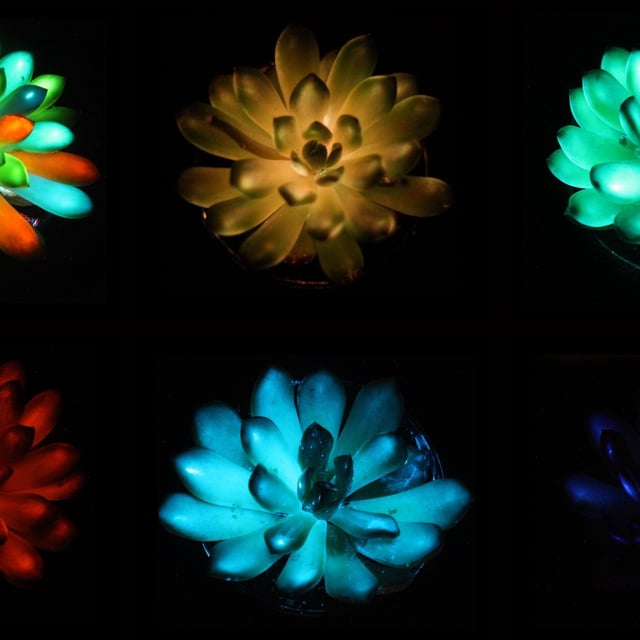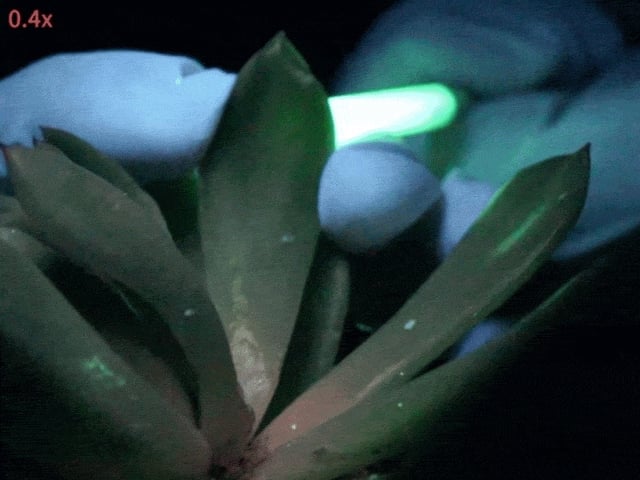Overview
- The research, published August 27 in Matter by South China Agricultural University, presents a proof of concept and the team has applied for a patent.
- Strontium aluminate–based afterglow phosphors around 7 micrometres wide spread through leaves and re‑emit stored light in hues including green, red, blue, violet and white.
- Echeveria 'Mebina' produced the strongest, most uniform glow, whereas non‑succulents such as golden pothos and bok choy showed weak or patchy luminescence.
- A wall of 56 treated succulents illuminated nearby objects well enough to read, with material costs of roughly 10 yuan (about $1.40) per plant and preparation taking about 10 minutes, though each leaf must be injected.
- The glow lasts up to roughly two hours and can be recharged, but long‑term plant health, toxicity and environmental disposal remain under evaluation, and experts say the approach is suited to decorative or low‑intensity lighting rather than replacing streetlights.

